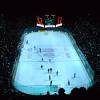What happens if both teams kick a field goal in overtime? Under the new setup, both teams will get the ball in overtime regardless of what happens. So, there won’t be any sudden death overtime until the second possession of the extra period.
Are you allowed to kick a field goal on overtime? Remove Punts and Field Goals from Overtime
However, once a team is in possession of the ball they are not allowed to kick field goals or punt.
When did NHL overtime Rules Change? The NHL changed its overtime format ahead of the 2015-16 season, adopting 3-on-3 OT. The AHL and ECHL had used this format before the NHL decided to implement it in place of 4-on-4. The full section of the NHL rulebook on overtime can be found here.
What is the Gretzky rule? The Gretzky rule
Gretzky held a press conference one day after being awarded the Hart Memorial Trophy, criticizing the NHL for punishing teams and players who previously benefited. The rule change became known as the “Gretzky rule.” The rule was reversed for the 1992–93 season.
What happens if both teams kick a field goal in overtime? – Additional Questions
What is the longest overtime game in NHL history?
1. Red Wings vs. Montreal Maroons: 176 minutes, 3 seconds (6 OTs)
- Date: March 24, 1936.
- Score: Red Wings 1, Maroons 0.
- OT winner: Mud Bruneteau.
- Round: Stanley Cup semifinal.
What year did the NHL start overtime in regular season?
In the first games to go to overtime, on October 5, 1983, the Minnesota North Stars and Los Angeles Kings skated to a 3–3 tie, and the Detroit Red Wings and Winnipeg Jets tied 6–6. The first regular-season game decided by overtime was on October 8, 1983, as the New York Islanders beat the Washington Capitals 8–7.
How does overtime work in NHL Playoffs 2022?
NHL announces COVID-19 protocols for 2022-23 season
There is no shootout, so if the first overtime period ends without a goal, then the game will move to a second overtime with the same format. This continues until a goal is scored.
When did NHL get rid of ties?
NEW YORK (July 22, 2005) – Regular-season games that are tied at the conclusion of overtime will be decided by a shootout round beginning in 2005-06, the National Hockey League announced today. The new shootout rule guarantees a winner each game; ties have been eliminated.
What are the NHL overtime rules?
During the regular season, if the game is tied after 60 minutes of regulation play, an overtime period with an additional 5 minutes will be added. If a player scores during this time, the game is automatically over and his team will be deemed the winner.
Do NHL overtime goals count?
Regardless of the number of goals scored during the shootout portion of overtime, the final score recorded for the game will give the winning team one more goal than its opponent, based on the score at the end of overtime.
What happens if nobody scores in overtime hockey?
If nobody scores in the overtime period, the teams engage in a “penalty shootout” where three skaters, selected by the head coaches on the teams, go one-on-one against the opposing goaltender, taking the puck at center ice for a “penalty shot.”
Does NHL do sudden death?
Currently, the NHL, American Hockey League, and ECHL also use the sudden-death system in their regular seasons, playing a five-minute overtime period when the score is tied at the end of regulation time.
Can a hockey game end in a tie?
At the NHL level of hockey, a game cannot end in a tie. If the game is tied at the end of regulation time, the teams will play a 5 minute overtime, and if no goal is scored the game will be decided by a shootout. However, in the NCAA and recreational levels games can end in a tie.
Do shootout goals count as goals in hockey?
Once overtime starts, for official scoring purposes, the game is assured to have one more goal — and one more goal only. In shootouts, despite the fact that a “goal” doesn’t actually occur, it doesn’t matter.
Do penalties carry over to overtime?
PENALTIES & POWER PLAYS: If a penalty is taken in overtime, the teams play 4-on-3. (Essentially, the team on the power play just adds another player.) If a second penalty is taken, the teams will play 5-on-3. If a penalty carries over from regulation, the teams will play at 4-on-3.
Why do goalies raise their glove for icing?
Sometimes the goaltender will raise his hand for icing also. If icing is waved off by a referee it is either because: The team committing the icing is shorthanded, (penalty killing).
Why is there no icing on power plays?
Icing is when a player on his team’s side of the red center line shoots the puck all the way down the ice and it crosses the red goal line at any point (other than the goal). Icing is not permitted when teams are at equal strength or on the power play.
What is the trapezoid rule in hockey?
The trapezoid in hockey is the area behind each goal on the rink. In the trapezoid, the goaltender is allowed to play the puck on their stick and move around freely below the goal line. Since the NHL’s rule change in 2004, goalies are not allowed to touch the puck in the corners below the goal line.
Can you have a 5 on 2 in hockey?
No, a team can never have less than 3 players on the ice. If a team takes a penalty while they have three players on the ice the penalty will be served at the expiry of the penalty with the least amount of time left.
Who has to put their stick down first in an NHL faceoff?
In the NHL, the player from the visiting team is required to place his stick on the ice for the face-off first when it takes place at the centre-line dot. For all other face-offs, the player from the defending team must place his stick first.
Why can’t goalies go in the trapezoid?
The goaltenders are only allowed to play the puck inside of the trapezoid when the puck goes behind the net. The idea was that this would limit the goaltender’s ability to retrieve the puck for their team and would give the attacking team a greater chance at winning possession of the puck deep in their offensive zone.



